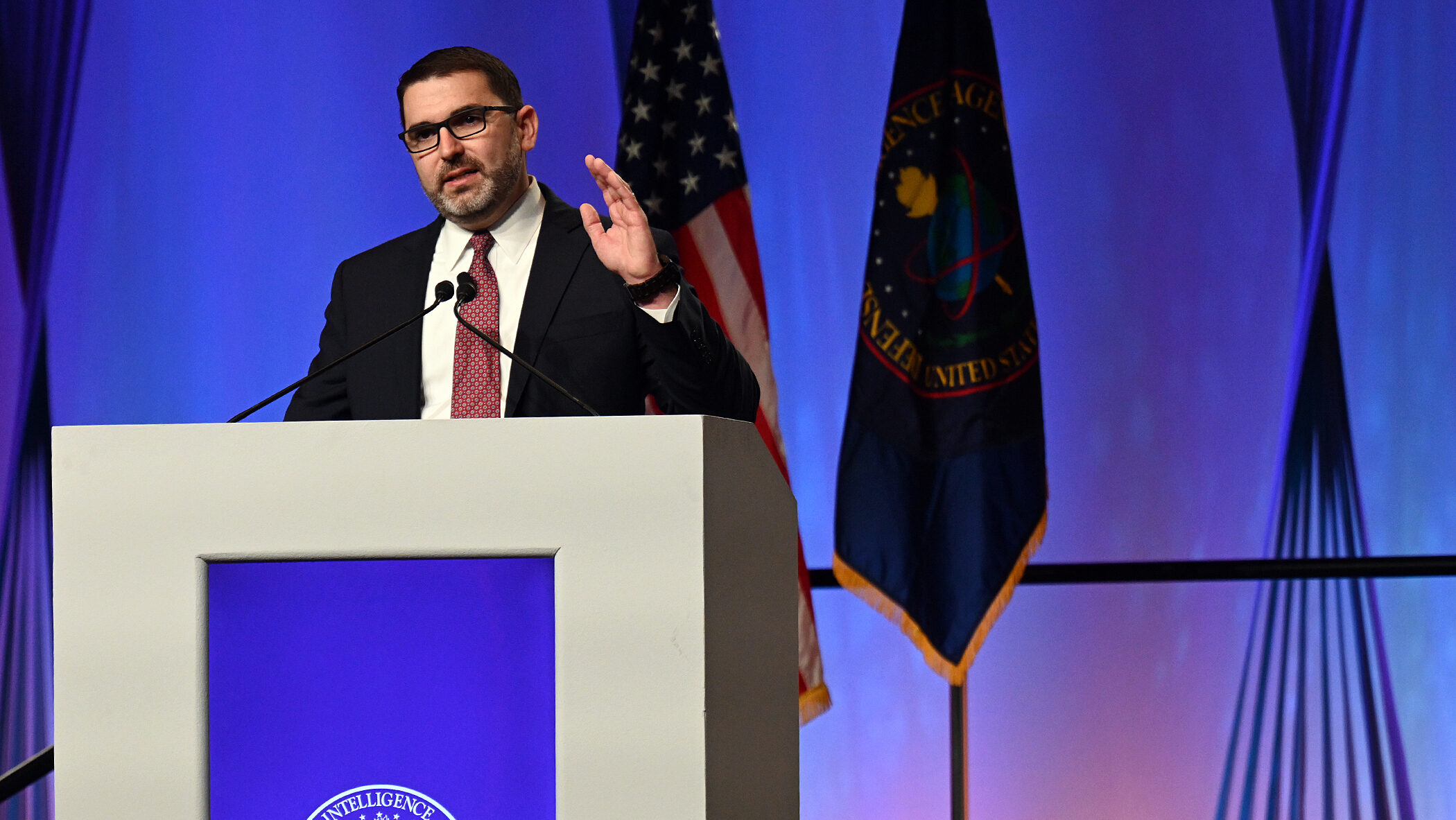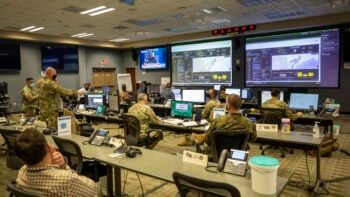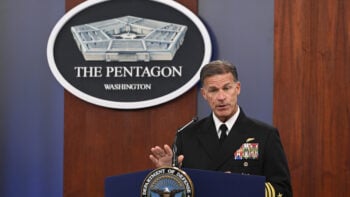
Defense Intelligence Agency Chief Information Officer Douglas Cossa speaks at the 2021 Department of Defense Intelligence Information System (DoDIIS) worldwide conference plenary sessions on December 6, 2021. (Photo by David Richards)
DoDIIS 2023 — Modernizing the Joint Worldwide Intelligence Communication System, the government’s network for hosting top secret and sensitive compartmented information, is leading the priorities of the Defense Intelligence Agency’s chief information officer over the next year.
Speaking at the Department of Defense Intelligence Information System, or DoDIIS, conference, DIA CIO Doug Cossa said that JWICS, a system that dates back to the Gulf War and is used by the agency to store confidential intelligence, was developed during a time where DIA was challenged to figure out a way to transmit secure voice and video to the Pentagon.
“Flashforward where we are today and how that system has evolved, we have over a million users that depend on that for transmitting top secret information,” Cossa said.
Cossa has been vocal about the need for JWICS modernization for years. In 2021, he said DIA was investing significantly in the system and was focused on updating equipment, building out cyber security tools and optimizing use cases for JWICS.
Most recently, the spotlight was put on JWICS when 21-year-old Massachusetts Air National Guard cyber transport systems apprentice Jack Teixeira allegedly leaked hundreds of classified documents on social media platform Discord. On Monday, the Air Force released findings of its investigation into Texiera’s unauthorized disclosure of the documents and found, in part, that his access to JWICS “enabled him to view intelligence content and analysis that reside on” classified systems.
IT Modernization And Connectivity
Following JWICS modernization, Cossa said his other priorities included improving DIA’s information technology workforce and modernizing DoD intelligence information systems, an area that DIA “divested significantly from” in 2013.
He said that DIA’s shared desktop environment, which the agency has worked on with the National Geospatial Agency, now has more than 70,000 users, which “aides in the integration in how we share intelligence.” Next on his priorities is increasing international connectivity.
“If there’s anything that the recent crises that I’ve seen as CIO during my tenure here — whether it be the Afghanistan retrograde, Russia-Ukraine crisis, and now the Israel-Hamas conflict — all depended and still depend on our interactions and our intelligence sharing with international partners,” Cossa said. “COVID obviously was a significant shock to our system. … That really knocked us off course and focused us to recalibrate how we work day in and day out.”
Part of that adjustment included transitioning DIA’s software development and IT capabilities to the “unclassified fabric,” he added, which he referred to as the capability delivery pipeline, another priority area for his office in the coming year. Cossa described the unclassified pipeline as a place where DIA can deliver software onto secret and top secret networks.
“As we think about where we are in the world today… we’re wondering, how are we going to compete with countries like China that are now fighting for world dominance?” he said. “We are living in more chaotic times than ever with crises around the world and we realize that everything is at stake to include our national security. As we think about the future, we are, as technologists, on the frontline to respond.”






















